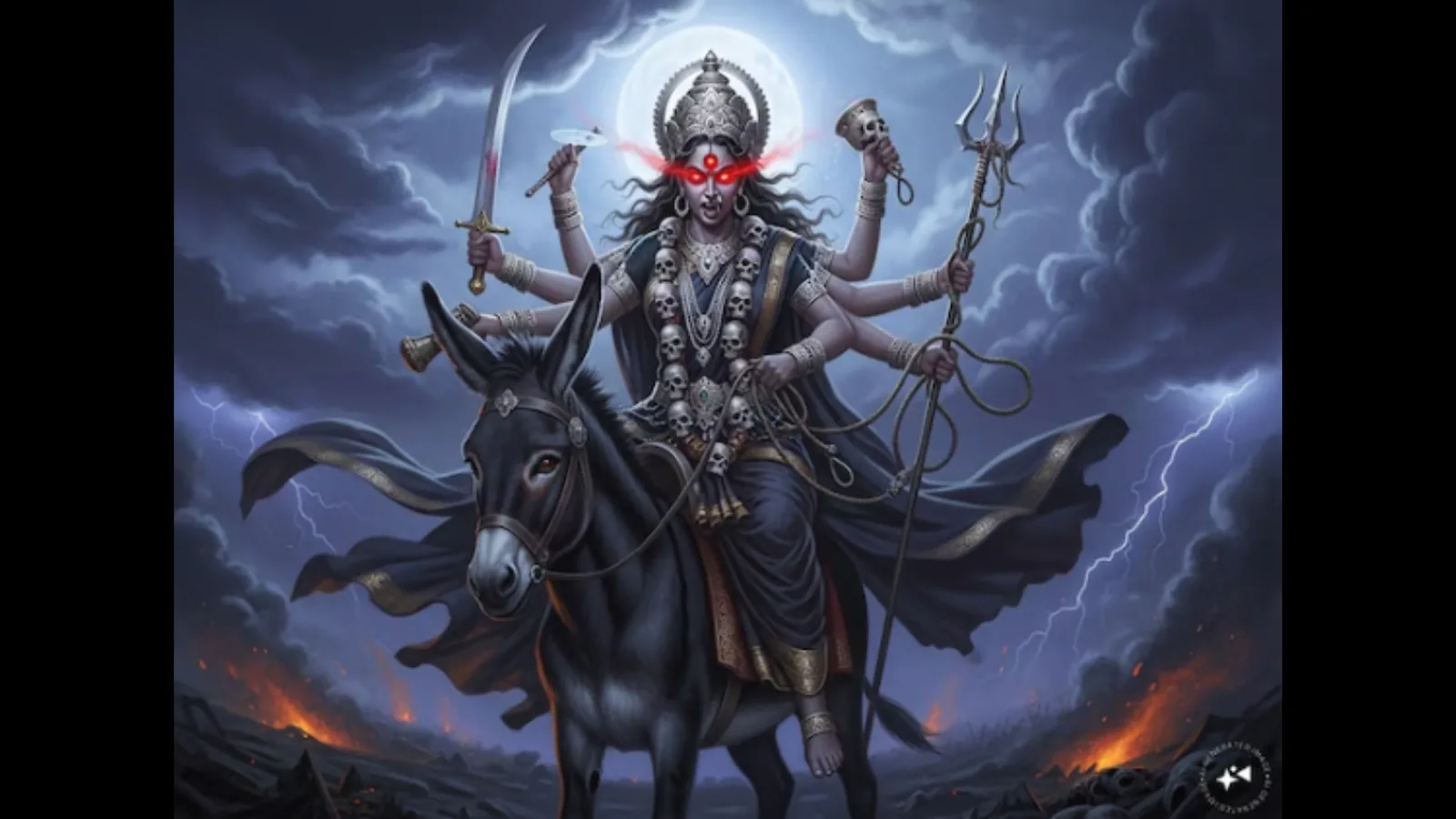By News18,Satyaki Baidya
Copyright news18

In India, two Hindu goddesses ride on a donkey. This choice of vehicle, surprising in Indian culture, holds both symbolic and narrative significance.
Shitala Mata, the goddess who provides relief from smallpox and measles, and Kaalratri, worshipped during Navratri, both use the donkey as their mount.
While the donkey is often seen as stubborn and foolish in Greco-Roman and Asian folklore, it holds a highly positive and revered position in Christianity, Judaism, and Islam.
In Christianity, the donkey symbolises humility, service, and peace, with Jesus Christ arriving in Jerusalem riding a donkey. The Bible depicts the donkey as a hardworking and trustworthy animal. In Judaism, it is seen as an intelligent creature.
However, in India and the West, the donkey is considered a symbol of the “burden-bearer.” In the tales of Homer and Aesop, the donkey was generally associated with laziness, stubbornness, foolishness, and the lower class.
The donkey also symbolises immunity, which explains Shitala Mata’s choice of it as her vehicle. Shitala Mata, revered for her role in providing relief from diseases like smallpox and measles, chose the donkey because she considered it a symbol of patience, tolerance, and immunity.
The donkey is a tolerant animal that works in all circumstances and rarely falls ill. Shitala Mata’s association with the donkey underscores her ability to fight illness and her patience. The humble and simple nature of the donkey reflects her accessibility to devotees.
Shitala Mata is often depicted holding a broom in one hand and a pot in the other, symbolising cleanliness and hygiene. Riding a donkey, she conveys the message that cleanliness and patience are essential to ward off diseases.
The story behind Shitala Mata’s choice of a donkey as her vehicle is detailed in the Skanda Purana and folklore. According to these sources, Goddess Shitala, wandering the earth as an old woman burning with illness, sought help from a potter’s wife. The potter’s wife, despite her poverty, served her with devotion, providing cold water and peace.
When the potter could not provide a seat, Shitala Mata chose a donkey parked outside the house. With her broom, she swept away the poverty and illness from the potter’s house, making the donkey her vehicle from that moment.
Goddess Kaalratri, the seventh form of the Navadurga goddess, also rides a donkey. Known for her fierce form that destroys darkness and evil forces, Kaalratri’s donkey symbolises ignorance and arrogance. Her choice to ride a donkey highlights her power to eliminate ignorance and ego from the lives of her devotees.
The donkey’s symbolism of slowness and tolerance further emphasises that supreme power can only be utilised when the mind and senses are fully controlled. Despite her fierce form, Kaalratri’s riding a donkey demonstrates that her power and grace are accessible to all devotees, regardless of their social or material status.
Five characteristics of the donkey highlight its unique qualities:
The donkey can work in extremely harsh and arid environments, surviving on minimal food and water, and carrying heavy loads over rugged mountain paths for long periods.
Often considered stubborn or foolish, a donkey’s refusal to move is actually a prudent decision based on its deep wisdom and instinct for self-preservation. Donkeys are also used to protect flocks of sheep or goats due to their ability to sense danger immediately.
Donkeys have a sharp memory, remembering routes and places they have visited only once before.
They adapt well to circumstances, capable of working alone or in small groups, making them ideal for farmers and shepherds.
Originating from the desert regions of Africa, donkeys are well-suited to withstand heat and drought. Their thick skin and ability to tolerate up to 30% water loss of their body weight make them resilient compared to horses, which can only tolerate 15%.



